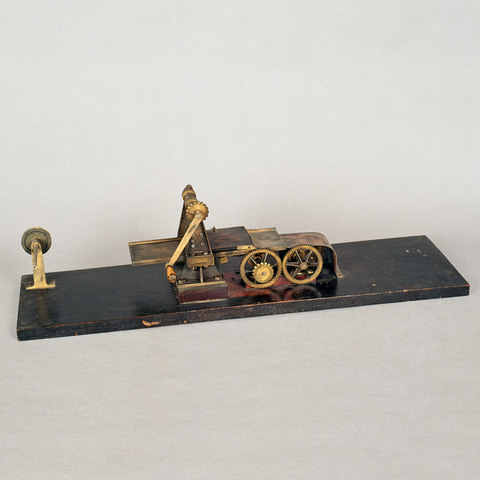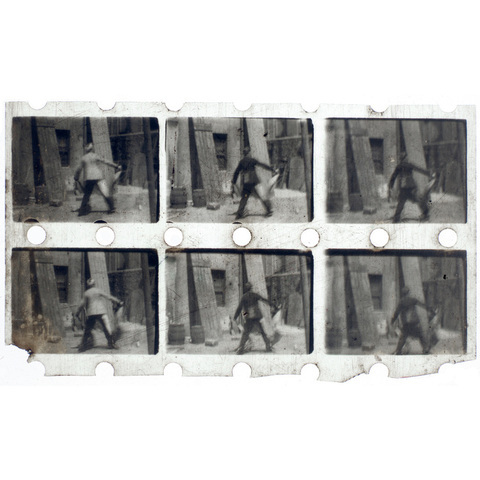Perforatrice de film 82 mm trichrome
Fiche détaillée
Type de l'appareil
entraînement du film 82 mm trichrome (à sept perforations horizontales sur une rangée) par trois griffes ; came excentrique ; base en bois ; manivelle
Auteurs
Jumeaux Benjamin
Brighton, Colebrook Road
Lascelles Davidson William Norman
Liverpool, 20 Middle Street
Fabricants
Informations non disponibles
Utilisateurs
Jumeaux Benjamin
Brighton, Colebrook Road
Lascelles Davidson William Norman
Liverpool, 20 Middle Street
Distributeurs
Informations non disponibles
Sujet du modèle
Informations non disponibles
Objectif
Informations non disponibles
Taille de l'objet
Ouvert :
Informations non disponibles
Fermé :
Longueur : 76 cm
Largeur : 22.5 cm
Hauteur : 29 cm
Diamètre :
Informations non disponibles
Taille de la boîte de transport
Informations non disponibles
Remarques
Perforeuse pour les essais de films trichromes de Benjamin Jumeaux et William Norman Lascelles Davidson. Il existe des essais sur film 82 mm trichrome conservés dans la collection Will Day (Service des Archives du Film). Voir aussi tireuse trichrome de Benjamin Jumeaux et Lascelles Davidson : AP-95- 111.
"Dr Jumeaux 3 colour film. One of the early attempts to place colour kinematography upon the screen was a 3 colour process invented by Dr Jumeaux of Southwick nr. Brighton, England. This process conceived by Dr Jumeaux in 1898 was experimented upon by him for many years, during which time a considerable sum of money was spent in the endeavour to bring it to commercial perfection. It was founded upon the principle of Ives Chromoscope, using the 3 primary colors, red, yellow and blue, side by side upon a color sensitized film 3 1/4 inch in width, and taken in a camera fitted with 3 lens, behind each of which was a color filter. The negative was developed and a print made in the usual manner and a special projector fitted with 3 color filters and lens was used, the central lens was fixed and the two outside lens were made to swivel until the pictures from all 3 lenses were supersposed upon the screen. The results of this system were never satisfactory, as the angular disparity between the lenses would not allow of a correct superimposition of the objects" (Will Day, 25 000 years to trap a shadow, tapuscrit, archives Cinémathèque française).

